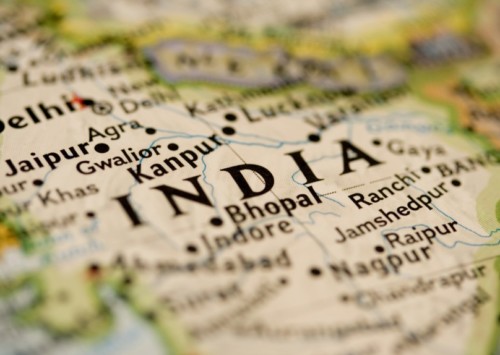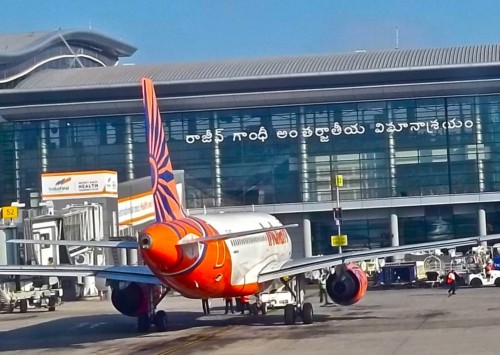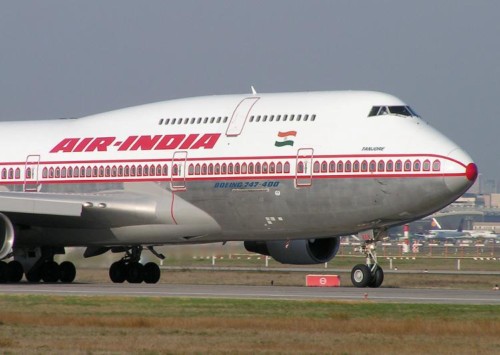India’s aviation sector soaring high
As the future of India’s aviation sector looks bright as per latest reports and studies, the performance of domestic airlines is at an all-time high, showing a significant increase in the current year. With newer airports coming up and more flights being introduced especially on the international front, the Indian aviation sector is on a roll.
On October 1, the President of India, Ram Nath Kovind inaugurated the first airport in Shirdi, the pilgrimage town of Maharashtra to aid spiritual and physical connectivity and generate employment. This thus will encourage significant contribution towards a better economy. In order to handle the rising air traffic and keeping in sync with the government’s regional connectivity scheme (RCS), the Airports Authority of India (AAI) has also proposed a new greenfield international airport in Odisha, citing limitations in the expansion of the Biju Patnaik International Airport.
India is fast becoming the world’s third largest aviation market, with passenger numbers growing by around 20 pc each year which is far exceeding the global average of 7.3 pc, Emirates stated in its latest monthly bulletin. According to traffic data submitted by domestic airlines for performance evaluation to the Ministry of Civil Aviation, India, passengers carried by domestic airlines during January-August 2017 were 75.41 million as against 64.47 million during the corresponding period of previous year thereby registering a growth of 16.97 pc.
Meanwhile, the multinational conglomerate, Adani Group is ready to enter the airport business with an international airport at Mundra, Gujarat. The group has firmed up plans to upgrade the existing airstrip at Mundra to a full-fledged commercial airport with integrated cargo and aerospace operations. Adani Group has already received environmental clearance for the project and plans to invest around INR 15 billion in it.
Statistics
A recent study by the International Air Travel Association (IATA) suggests that by 2030 Indian air passengers would total 442 million flyers, up from 159 million last year and thus, would support 19 million jobs in the country and contribute USD 172 billion toward its economy. Statistics on the international market share gives a breakdown by airline performance. Jet flew most passengers out of the country, with 13.7 pc of the total, followed by Air India with 10.4 pc, followed by Emirates with 8.7 pc. Etihad was unable to give a figure in time for publication, but the Abu Dhabi airline is also a significant part of the remaining 67.2 pc.
Expanding horizons
The debt-ridden national carrier, Air India, has launched new routes from India to San Francisco, London, Vienna and Madrid in the previous year, while Jet Airways, SpiceJet and Indigo have also expanded their routes both in the domestic and international front.
India gears up for an Afghan experience, as two Afghan cities will be connected by direct flights to Delhi by this week, the government announced on Monday. Mazar-e-Sharif, in northern Afghanistan and Herat in the west, will be connected to Indira Gandhi International Airport in Delhi via direct flights. The inaugural flight took off from the Maulana Jalalludin Balkhi airport in Mazar-e-Sharif for Indira Gandhi International Airport at 1030 hours on Monday. Kam Air, a private airline of the Kamgar Group, will operate two flights a week from Mazar-e-Sharif, on Mondays and Wednesdays and from Herat on Tuesdays and Fridays.The flight was inaugurated by Mohammad Afzal Hadeed, chairman of the Provincial Council of Balkh province, and Manjish Grover, consul general of India in Mazar-e-Sharif. This is expected to encourage outbound Indian tourists to Afghanistan and vice versa while aiding trade and commerce between the two countries.
India is also set to increase connectivity with Japan as Japan Airlines Co, which bought its first Airbus SE planes four years ago, is considering adding to its pending order of wide-body A350s as it seeks to increase routes to India and North America.
Debts goodbye?
The new owners of Air India following divestment may not have to worry about its overwhelming debt as the government has decided to move much of this into a special purpose vehicle (SPV) before selling the carrier, senior aviation ministry officials said. The committee on Air India’s divestment led by Finance Minister Arun Jaitley took this decision at a meeting on August 30, they said.
“The committee decided to transfer all debt and assets of Air India to an SPV that will be managed by the government The airline will be sold only with aircraft debt on its books. This will make the airline a much more lucrative proposition,” stated one of the officials.
Air India has a total debt of INR 520 billion and about INR 330 billion is on account of working capital loans, which will be transferred to the SPV. The remaining is against aircraft purchases, which will be with the company that’s put up for sale.














